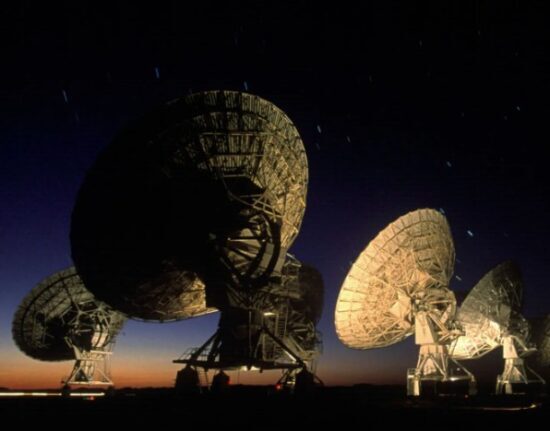A few days ago I posted an essay on this site looking at our search for evidence of past or present life on Mars. I concluded the piece by talking about using artificial intelligence (AI) to scan radio signals to find unnatural patterns.
Machine learning is AI software designed to analyze large datasets. It can be given parameters which define what to look for. In radio astronomy, where incoming transmissions from the noise produced by stars, quasars, pulsars, black holes, nebula and more, separating signals that could be from an advanced technical species, has been challenging.
One thing that is great about radio telescopes today is that we capture and record all incoming noise. It is this legacy data that astronomers are now using software algorithms to analyze for signals that could come from extraterrestrial intelligence.
In a January 2023 published paper in Nature Astronomy, a collaboration by authors from universities in Toronto, Canada, Berkeley in California, Manchester in the United Kingdom, Malta, Queensland and Western Australia, and the SETI Institute, created a machine learning algorithm variational autoencoder, a type of neural network that learns through the unsupervised study of unlabelled data. They used it to try and find technosignatures contained within 150 Terabytes of radio traffic from 820 nearby stars. The data source came from the Green Bank Telescope in West Virginia, the world’s largest steerable radio telescope. This data had previously been searched in 2017 using traditional techniques.
Radio signals are abundant throughout the Universe and they represent the most effective way for us to find out if we are a solo act or one of many technical civilizations. Our contribution to radio traffic has been going on for more than a century which means an alien civilization within a hundred light-years from us with technology similar to ours can now detect us.
SETI (Search for Extraterrestrial Intelligence) has been using radio telescopes and receiving antennae since 1960 in a search to detect signals coming from space in patterns similar to what we produce. So far, however, it has proven to be harder than finding the proverbial needle in a haystack. That’s why the application of AI to the vast amounts of radio traffic coming from space is seen as a step up in our efforts to detect alien intelligence. It seems ironic that an AI may be the way we first discover alien intelligence originating from distant solar systems. And it may be that those alien species are using their own AIs to be doing the same.
So what are the researchers getting the machine learning AI to look at?
- Radio traffic that is narrow band in the order of just a few hertz, the frequency unit used to describe signals from space. Natural signals tend to be broadband.
- Radio signals with non-zero drift rates indicating they are not coming from radio interference from the vicinity of Earth.
- Radio signals that only are detected when we point our antennae or telescope at a celestial target, but disappear when we point away from it. In comparison, local human-generated radio signals are detectable continuously.
The preliminary results have been encouraging with eight potential technosignatures detected. In a University of Toronto press release, Dr. Cherry Ng, one of the co-authors of the paper states, “I am impressed by how well this approach has performed on the search for extraterrestrial intelligence.” Dr. Ng continues, “With the help of artificial intelligence, I’m optimistic that we’ll be able to better quantify the likelihood of the presence of extraterrestrial signals from other civilizations.”
The eight signals come from five different stars at distances from 30 to 90 light-years from Earth. Previous analysis of the data missed them. The researchers have demonstrated an abundance of caution in terms of expectations that what they have discovered is in fact coming from multiple extraterrestrial technical civilizations. Why? Because in follow-up observations using the Green Bank Radio Telescope looking at the same celestial targets, the signals did not repeat. Nonetheless, the researchers are upping their game by increasing the study from 820 to one million stars using a different source, the South African MeerKAT, a giant array of 64 interlinked radio telescope receivers.









